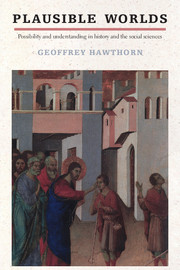Crossref Citations
This Book has been
cited by the following publications. This list is generated based on data provided by Crossref.
Dror, Yehezkel
1994.
Statecraft as Prudent Risk Taking: The Case of the Middle East Peace Process.
Journal of Contingencies and Crisis Management,
Vol. 2,
Issue. 3,
p.
126.
Hewson, Martin
1994.
The Global Political Economy of Communication.
p.
61.
O'NEILL, ONORA
1994.
Practical Reason and Possible Community: A Reply to Jean‐Marc Ferry.
Ratio Juris,
Vol. 7,
Issue. 3,
p.
308.
Donald, Matthew J.
1995.
A mathematical characterization of the physical structure of observers.
Foundations of Physics,
Vol. 25,
Issue. 4,
p.
529.
Tilly, Charles
1995.
Citizenship, Identity and Social History.
International Review of Social History,
Vol. 40,
Issue. S3,
p.
1.
Platt, Jennifer
1996.
Has Funding Made a Difference to Research Methods?.
Sociological Research Online,
Vol. 1,
Issue. 1,
p.
69.
Brass, Tom
1996.
Popular culture, populist fiction(s): The Agrarian Utopiates of A.V. Chayanov, Ignatius Donnelly and Frank Capra.
Journal of Peasant Studies,
Vol. 24,
Issue. 1-2,
p.
153.
Lee, Yeon‐ho
1996.
Political aspects of South Korean state autonomy: Regulating the chaebôl, 1980–93.
The Pacific Review,
Vol. 9,
Issue. 2,
p.
149.
Favell, Adrian
1997.
Citizenship and immigration: Pathologies of a progressive philosophy.
Journal of Ethnic and Migration Studies,
Vol. 23,
Issue. 2,
p.
173.
Tsoukas, Haridimos
and
Cummings, Stephen
1997.
Marginalization and Recovery: The Emergence of Aristotelian Themes in Organization Studies.
Organization Studies,
Vol. 18,
Issue. 4,
p.
655.
van Krieken, Robert
1997.
Sociology and the Reproductive Self: Demographic Transitions and Modernity.
Sociology,
Vol. 31,
Issue. 3,
p.
445.
Hong, Sungook
1998.
Unfaithful Offspring? Technologies and Their Trajectories.
Perspectives on Science,
Vol. 6,
Issue. 3,
p.
259.
Smith, R.D.
1998.
Social Structures and Chaos Theory.
Sociological Research Online,
Vol. 3,
Issue. 1,
p.
82.
Pesmazoglou, Stephanos
1998.
Inventing a Curriculum for the Social Sciences: Some Presuppositions for the Redefinition of Scholarship.
Higher Education in Europe,
Vol. 23,
Issue. 4,
p.
447.
Thrift, Nigel
1999.
The Place of Complexity.
Theory, Culture & Society,
Vol. 16,
Issue. 3,
p.
31.
Alderson, Arthur S.
1999.
Explaining Deindustrialization: Globalization, Failure, Or Success?.
American Sociological Review,
Vol. 64,
Issue. 5,
p.
701.
Lebow, Richard Ned
2000.
What's So Different about a Counterfactual?.
World Politics,
Vol. 52,
Issue. 4,
p.
550.
McBeath, Graham
and
Webb, Stephen A.
2000.
ON THE NATURE OF FUTURE WORLDS? - CONSIDERATIONS OF VIRTUALITY AND UTOPIAS.
Information, Communication & Society,
Vol. 3,
Issue. 1,
p.
1.
Morley, Neville
2000.
Trajan's Engines.
Greece and Rome,
Vol. 47,
Issue. 2,
p.
197.
Morley, Neville
2001.
The Transformation of Italy, 225–28 B.C..
Journal of Roman Studies,
Vol. 91,
Issue. ,
p.
50.





